300 scholarly books by Brandeis University Press and 15
start with P
300 scholarly books by Brandeis University Press and 15
300 scholarly books by Brandeis University Press
15 start with P start with P
15 start with P start with P
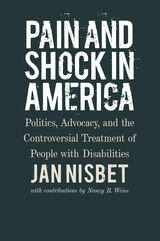
Pain and Shock in America
Politics, Advocacy, and the Controversial Treatment of People with Disabilities
Jan Nisbet
Brandeis University Press, 2021
The first book to be written on the Judge Rotenberg Center and their use of painful interventions to control the behavior of children and adults with disabilities.
For more than forty years, professionals in the field of disability studies have engaged in debates over the use of aversive interventions (such as electric shock) like the ones used at the Judge Rotenberg Center. Advocates and lawyers have filed complaints and lawsuits to both use them and ban them, scientists have written hundreds of articles for and against them, and people with disabilities have lost their lives and, some would say, lived their lives because of them. There are families who believe deeply in the need to use aversives to control their children’s behavior. There are others who believe the techniques used are torture. All of these families have children who have been excluded from numerous educational and treatment programs because of their behaviors. For most of the families, placement at the Judge Rotenberg Center is the last resort.
This book is a historical case study of the Judge Rotenberg Center, named after the judge who ruled in favor of keeping its doors open to use aversive interventions. It chronicles and analyzes the events and people involved for over forty years that contributed to the inability of the state of Massachusetts to stop the use of electric shock, and other severe forms of punishment on children and adults with disabilities. It is a long story, sad and tragic, complex, filled with intrigue and questions about society and its ability to protect and support its most vulnerable citizens.
For more than forty years, professionals in the field of disability studies have engaged in debates over the use of aversive interventions (such as electric shock) like the ones used at the Judge Rotenberg Center. Advocates and lawyers have filed complaints and lawsuits to both use them and ban them, scientists have written hundreds of articles for and against them, and people with disabilities have lost their lives and, some would say, lived their lives because of them. There are families who believe deeply in the need to use aversives to control their children’s behavior. There are others who believe the techniques used are torture. All of these families have children who have been excluded from numerous educational and treatment programs because of their behaviors. For most of the families, placement at the Judge Rotenberg Center is the last resort.
This book is a historical case study of the Judge Rotenberg Center, named after the judge who ruled in favor of keeping its doors open to use aversive interventions. It chronicles and analyzes the events and people involved for over forty years that contributed to the inability of the state of Massachusetts to stop the use of electric shock, and other severe forms of punishment on children and adults with disabilities. It is a long story, sad and tragic, complex, filled with intrigue and questions about society and its ability to protect and support its most vulnerable citizens.
[more]
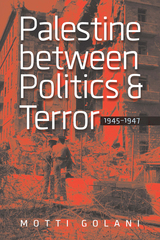
Palestine between Politics and Terror, 1945–1947
Motti Golani
Brandeis University Press, 2013
British General Sir Allan Cunningham was appointed in 1945 as high commissioner of Palestine, and served in this capacity until the end of the British mandate on May 15, 1948. The three years of Cunningham’s tenure were tremendously complex politically: players included the British government in London, the British army, the British administration in Jerusalem, and diverse military forces within the Zionist establishment, both Jew and Arab. Golani revisits this period from the perspective of the high commissioner, examining understudied official documents as well as Cunningham’s letters, notes, and cables. He emphasizes especially the challenges of navigating Jewish and Arab terrorists, on the one hand, and the multiple layers of British institutional bureaucracies, on the other, and does an excellent job of establishing Sir Allan’s daily trials within the broad frame of the collapse of the British Empire following World War II.
[more]
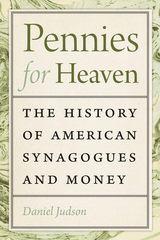
Pennies for Heaven
The History of American Synagogues and Money
Daniel Judson
Brandeis University Press, 2018
In the annals of American Jewish history, synagogue financial records have been largely overlooked. But as Daniel Judson shows in his examination of synagogue ledgers from 1728 to the present, these records provide an array of new insights into the development of American synagogues and the values of the Jews who worshipped in them. Looking at the history of American synagogues through an economic lens, Judson examines how synagogues raised funds, financed buildings, and paid clergy. By “following the money,” he reveals the priorities of the Jewish community at a given time. Throughout the book, Judson traces the history of capital campaigns and expenditures for buildings. He also explores synagogue competition and debates over previously sold seats, what to do about wealthy widows, the breaking down of gender norms, the hazan “bubble” (which saw dozens of overpaid cantors come to the United States from Europe), the successful move to outlaw “mushroom synagogues,” and the nascent synagogue-sharing economy of the twenty-first century. Judson shows as well the ongoing relationship of synagogue and church financing as well as the ways in which the American embrace of the free market in all things meant that the basic rules of supply and demand ultimately prevailed in the religious as well as the commercial realm.
[more]
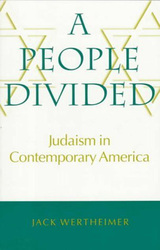
A People Divided
Judaism in Contemporary America
Jack Wertheimer
Brandeis University Press, 1997
This brilliant analysis of American Judaism in the last half of the 20th century won the 1993-94 National Jewish Book Award for the best book on contemporary Jewry and also was named an Outstanding Book of 1993 by Choice. Jack Wertheimer examines how fundamental changes in American society have affected Jewish religious and communal life, paying special attention to contradictions and schisms that threaten the integrity of American Jewish practices and beliefs. A People Divided remains an essential primer for anyone interested in the ongoing debate about what constitutes Jewishness and who is a Jew.
[more]
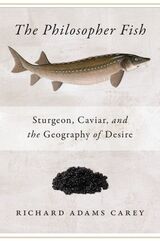
Philosopher Fish
Sturgeon, Caviar, and the Geography of Desire
Richard Adams Carey
Brandeis University Press, 2024
An updated new edition of Richard Adams Carey’s illuminating journey across the globe to uncover the secrets of the sturgeon.
From the acclaimed eco-journalist Rick Carey comes a fascinating chronicle of a fast-disappearing fish—and of the people whose lives and livelihoods depend on it. Since the days of the Persian Empire, caviar has trumpeted status, wealth, prestige, and sex appeal. In this remarkable journey to caviar’s source, Carey immerses himself in the world of the sturgeon, the fish that lays these golden eggs. The sturgeon has a fascinating biological past—and a very uncertain future. Sturgeon populations worldwide have declined seventy percent in the last twenty years. Meanwhile, the beluga sturgeon, producer of the most coveted caviar, has climbed to number four on the World Wildlife Fund’s most-endangered species list. A high-stakes cocktail of business, crime, diplomacy, technology, and the dilemmas of conservation, The Philosopher Fish is the epic story of a 250-million-year-old fish struggling to survive.
This new edition includes new chapters bringing up to date the story of this elusive and mysterious fish, and the people involved with both preserving and exploiting it.
From the acclaimed eco-journalist Rick Carey comes a fascinating chronicle of a fast-disappearing fish—and of the people whose lives and livelihoods depend on it. Since the days of the Persian Empire, caviar has trumpeted status, wealth, prestige, and sex appeal. In this remarkable journey to caviar’s source, Carey immerses himself in the world of the sturgeon, the fish that lays these golden eggs. The sturgeon has a fascinating biological past—and a very uncertain future. Sturgeon populations worldwide have declined seventy percent in the last twenty years. Meanwhile, the beluga sturgeon, producer of the most coveted caviar, has climbed to number four on the World Wildlife Fund’s most-endangered species list. A high-stakes cocktail of business, crime, diplomacy, technology, and the dilemmas of conservation, The Philosopher Fish is the epic story of a 250-million-year-old fish struggling to survive.
This new edition includes new chapters bringing up to date the story of this elusive and mysterious fish, and the people involved with both preserving and exploiting it.
[more]
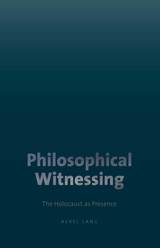
Philosophical Witnessing
The Holocaust as Presence
Berel Lang
Brandeis University Press, 2009
In this volume, eminent scholar Berel Lang brings the perspective of philosophical analysis to bear on issues related to the Holocaust. Setting out from a conception of philosophical “witnessing” that expands and illuminates the standard view of the witness, he confronts the question of what philosophy can add to the views of the Holocaust provided in other disciplines. Drawing on the philosophical areas of political theory, ethics, aesthetics, and the philosophy of history, he draws attention especially to the post-Holocaust emphasis on the concepts of genocide and “group rights.” Lang’s study, which emphasizes the moral choices that now face post-Holocaust thought, inspires the reader to think of the Holocaust in new ways, showing how its continued presence in contemporary consciousness affects areas of thought and practice not directly associated with that event.
[more]
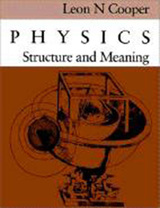
Physics
Structure and Meaning
Leon N. Cooper
Brandeis University Press, 1992
Physics explores the scientific view of the world as it has developed from the earliest theories of Aristotle, Euclid, and Newton to modern theories, such as Einstein’s relativity and quantum mechanics. The classic text’s chief distinction is its time-proven ability to overcome anxieties about science by arousing interest in imaginative ideas. Those curious about physics but lacking science and mathematics backgrounds will find well-told history and countless stimulating examples. The historical approach enables students to examine philosophical questions from many viewpoints and ot see how current theory evolved. Physics has been thoroughly tested and refined by several decades of classroom teaching. A new prologue covers the years since the original 1968 edition. Chapter source notes, review problems, questions and answers, and mathematical appendices are included for those wishing to pursue topics further. The material is supplemented with clear line drawings, illustrations, graphs, charts, and tables.
[more]
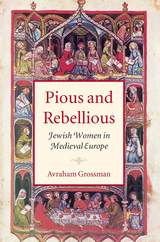
Pious and Rebellious
Jewish Women in Medieval Europe
Avraham Grossman
Brandeis University Press, 2004
This volume, an amazing act of historical recovery and reconstruction, offers a comprehensive examination of Jewish women in Europe during the High Middle Ages (1000–1300). Avraham Grossman covers multiple aspects of women’s lives in medieval Jewish society, including the image of woman, the structure of the family unit, age at marriage, position in family and society, her place in economic and religious life, her education, her role in family ceremonies, violence against women, and the position of the divorcée and the widow in society. Grossman shows that the High Middle Ages saw a distinct improvement in the status of Jewish women in Europe relative to their status during the Talmudic period and in Muslim countries. If, during the twelfth century, rabbis applauded women as "pious and pure" because of their major role in the martyrdom of the Crusades of 1096, then by the end of the thirteenth century, rabbis complained that women were becoming bold and rebellious. Two main factors fostered this change: first, the transformation of Jewish society from agrarian to "bourgeois," with women performing an increasingly important function in the family economy; and second, the openness toward women in Christian Europe, where women were not subjected to strict limitations based upon conceptions of modesty, as was the case in Muslim countries. The heart of Grossman’s book concerns the improvement of Jewish women’s lot, and the efforts of secular and religious authorities to impede their new-found status. Bringing together a variety of sources including halakhic literature, biblical and talmudic exegesis, ethical literature and philosophy, love songs, folklore and popular literature, gravestones, and drawings, Grossman’s book reconstructs the hitherto unrecorded lives of Jewish women during the Middle Ages.
[more]

Placeholder
Smith
Brandeis University Press, 2018
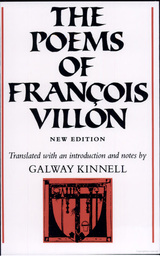
The Poems of François Villon
François Villon
Brandeis University Press, 1982

A Poetics of Trauma
The Work of Dahlia Ravikovitch
Ilana Szobel
Brandeis University Press, 2013
The work of the renowned Israeli poet, translator, peace activist, and 1998 Israel Prize laureate Dahlia Ravikovitch (1936–2005) portrays the emotional structure of a traumatized and victimized female character. Ilana Szobel’s book, the first full-length study of Ravikovitch in English, offers a theoretical discussion of the poetics of trauma and the politics of victimhood, as well as a rethinking of the notions of activity and passivity, strength and weakness. Analyzing the deep structure embodied in Ravikovitch’s work, Szobel unearths the interconnectedness of Ravikovitch’s private-poetic subjectivity and Israeli national identity, and shows how her unique poetics can help readers overcome cultural biases and sympathetically engage otherness.
[more]
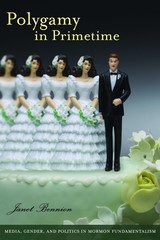
Polygamy in Primetime
Media, Gender, and Politics in Mormon Fundamentalism
Janet Bennion
Brandeis University Press, 2012
Recently, polygamy has become a “primetime” phenomenon. Television shows like Big Love and Sister Wives demonstrate the “progressive” side of polygamy, while horror stories from victims of abusive marriages offer less upbeat experiences among the adherents of the fundamentalist Church of Jesus Christ of Latter Day Saints (FLDS Church). Bennion, herself a product of Mormon polygamy, seeks to dispel the myths and misinformation that surround this topic. This study, based on seventeen years of ethnographic research among the Allred Group (Apostolic United Brethren) and on an analysis of recent blog journal entries written by a range of polygamous women, examines the variety and complexity of contemporary Mormon fundamentalist life in the Intermountain West. Although Bennion highlights problems associated with polygamy, including evidence that some forms are at high risk for father-child incest, she challenges the media-driven depiction of plural marriage as uniformly abusive and harmful to women. She shows how polygamist families can provide both economic security and social sustenance for some women, and how the authority of the husband can be undermined by the stresses of providing for multiple wives and children. Going beyond the media’s obsession with the sexual aspects of polygamous marriage, Bennion offers a rich description of familial, social, and legal contexts. Throughout, she makes the case for legalizing polygamy in order to allow greater visibility and regulation of the practice.
[more]
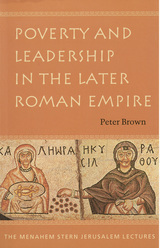
Poverty and Leadership in the Later Roman Empire
Peter Brown
Brandeis University Press, 2001
In three magisterial essays, Peter Brown, one of the world's foremost scholars of the society and culture of late antiquity, explores the emergence in late Roman society of "the poor" as a distinct social class, one for which the Christian church claimed a special responsibility. It is the story of how a society came to see itself as responsible for the care of a particular class of people -- a class that had not previously been cared for -- and of who benefited from that shift in interests. In his characteristically elegant and lucid prose, Brown seeks to recover the pre-Christian status of poor people, the actual nature of the relations between the Christian church and the poor, and the true motivations -- sometimes sincere, sometimes self-serving -- behind Christian rhetoric of love for the poor. He draws not only on the standard Greek and Latin sources for the later Roman Empire, but also on Jewish sources to document the interactions between Middle Eastern provincial societies and classical Roman traditions. Brown gracefully illuminates a crucial transition from classical to Christian culture: the emergence of a new understanding of what society -- and the Church -- owes to the poor that continues to resonate.
[more]
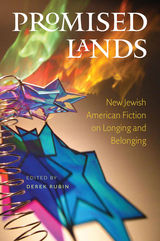
Promised Lands
Edited by Derek Rubin
Brandeis University Press, 2010
This vibrant anthology showcases new, unpublished short stories by a rapidly growing crop of highly talented young Jewish American fiction writers. Cohering around the core Jewish theme of the Promised Land, all the stories were written especially for this volume. With the kind of depth and imagination that only fiction allows, they offer striking variations on the multivalent theme of the Promised Land and how it continues to shape the collective consciousness of contemporary American Jews. This anthology provides a rich reading experience and a unique window onto Jewish American life and culture at the beginning of the twenty-first century. A scholarly introduction by Derek Rubin provides literary context, discusses the organization of the volume, and illuminates expected and unexpected connections among the stories. Promised Lands features 23 stories by Elisa Albert, Melvin Jules Bukiet, Janice Eidus, Rebecca Newberger Goldstein, Lauren Grodstein, Aaron Hamburger, Dara Horn, Rachel Kadish, Binnie Kirshenbaum, Joan Leegant, Yael Goldstein Love, Rivka Lovett, Tova Mirvis, Lev Raphael, Nessa Rapoport, Jonathan Rosen, Thane Rosenbaum, Joey Rubin, Edward Schwarzschild, Steve Stern, Lara Vapnyar, Adam Wilson, and Jonathan Wilson.
[more]
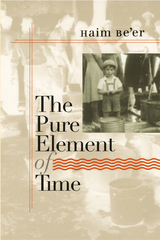
The Pure Element of Time
Haim Be’er
Brandeis University Press, 2012
Published in 1998 as Havalim, The Pure Element of Time is a rich and evocative autobiographical novel about a writer’s development. With his keen eye and opulent writing style, Haim Be’er turns the story of his childhood and maturity into a complex and gripping work of art. Constructed as a triptych, The Pure Element of Time begins with the author’s boyhood. Raised in an orthodox family in an old Jerusalem neighborhood in the early 1950s, Be'er was profoundly influenced by his overly pious grandmother, who was, nonetheless, a natural storyteller whose richly evocative parables and tales inspired his lifelong love for language. The middle section depicts his parents’ marriage, a tragic misalliance between a smart, independent Jerusalem-born woman and a withdrawn and defeated refugee from the Russian pogroms. The emergence of the writer’s individual literary voice—informed by, yet ultimately transcending, the influences of tradition and history—forms the emotional and psychological core of Be’er’s work.
[more]
READERS
Browse our collection.
PUBLISHERS
See BiblioVault's publisher services.
STUDENT SERVICES
Files for college accessibility offices.
UChicago Accessibility Resources
home | accessibility | search | about | contact us
BiblioVault ® 2001 - 2024
The University of Chicago Press









